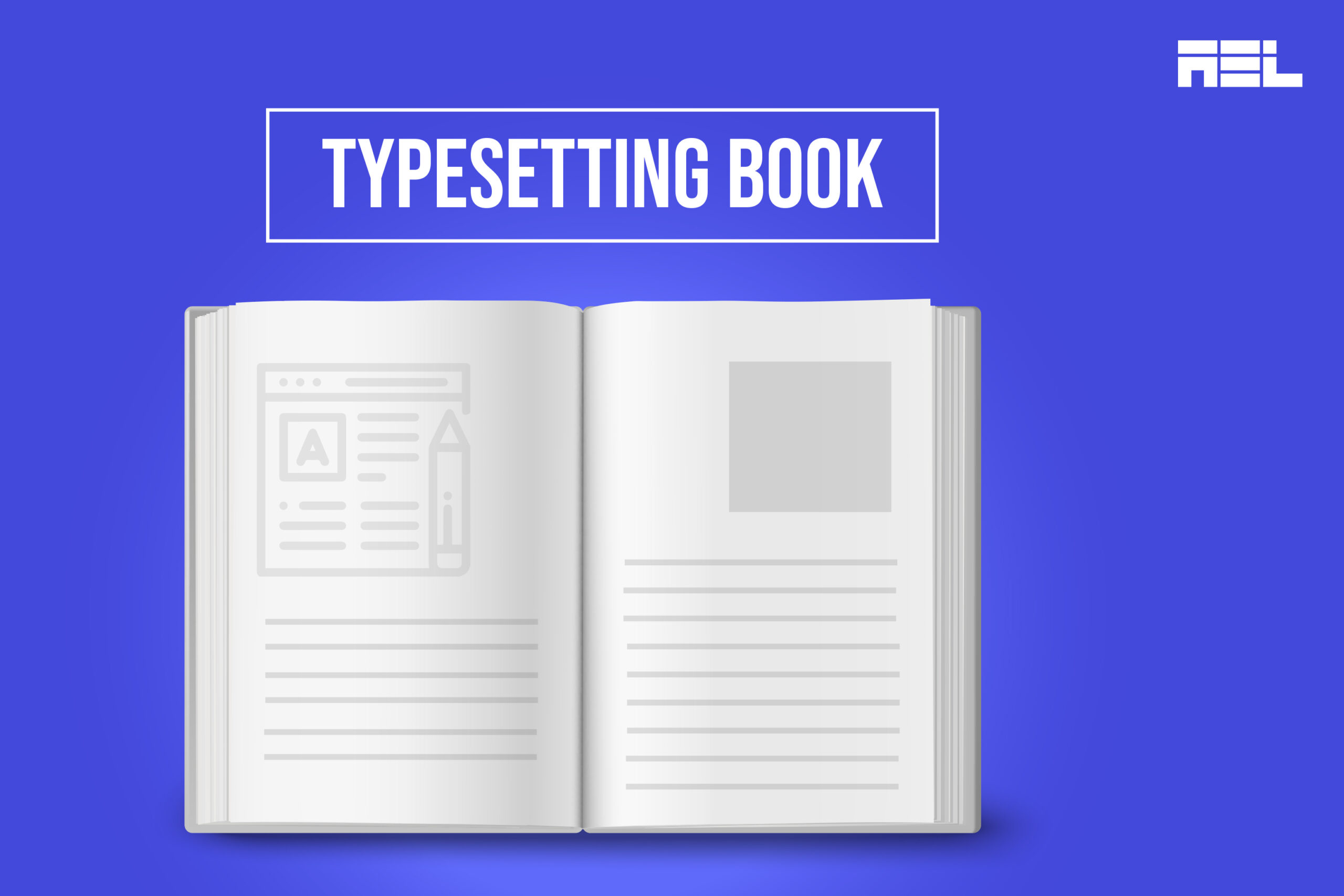Even though writing appears to be the most difficult phase of publishing a book, another equally crucial yet challenging stage is: Typesetting.
Typesetting can be described as, the process of arranging text and images on a page in a way that is both appealing to the eye and easy to read. It leaves a significant impact on your book’s readability, mood, tone, and professionalism. Additionally, it can shape your perusers’ view of your message and lay out your believability as a creator.
The significance of typesetting and how to effectively use it will be discussed in this article. Also, it will give directions on choosing the fitting design, arranging, and typography for your book. Finally, it will feature different programming and devices that can support the typesetting system or interface you with an expert typesetter.
Table of Contents
Understanding Typesetting:
Typesetting goes beyond simple formatting and typing. Applying basic settings and styles to your text, such as font size, style, and spacing, are all part of formatting. Then again, typesetting involves calibrating each part of your text and pictures to make a firm and outwardly satisfying plan.
Typesetting can be done manually or digitally. Manual typesetting involves physically arranging engraved letters or symbols on metal or wood surfaces. On the other hand, digital typesetting consists in using software or applications that let you change text and images on a screen.
Typesetting can be achieved without anyone else or by an expert. Assuming you decide to embrace it all alone, you should gain proficiency with the basics of typesetting and put time and exertion into executing them in your book. On the off chance that you decide on proficient help, it is significant to find a solid and talented typesetter who can rejuvenate your vision and convey a great item.
Essentials of Good Typography:
Numerous elements contribute to good typesetting. Here are some of the important ones:
Consistency: Ensure consistency throughout the typesetting of your book. This entails using consistent fonts, sizes, styles, margins, spacing, alignment, and other features for similar elements. Consistency fosters a sense of order and clarity for your readers.
Contrast: Create contrast through your typesetting to differentiate various elements on the page. This involves using different fonts, sizes, styles, colors, and more for different elements. Contrast helps establish a sense of hierarchy and emphasis for your readers.
Balance: Achieve visual balance by appropriately distributing the visual weights of different page elements through typesetting. This entails evenly distributing text and images on the page, avoiding excessive white space or overcrowding. Balance imparts a sense of harmony and proportion to your readers.
Alignment: Align text and images on your page according to a grid or guide through typesetting. This involves aligning the edges, centers, or baselines of various elements. Alignment provides your readers with a sense of structure and coherence.
Blank Space: Leave sufficient white space around text and images through typesetting. This entails providing appropriate padding, line spacing, paragraph spacing, and other features. Blank space gives your readers a sense of openness and aids their focus.
How to Choose the Right Typeface:

The typeface you choose can significantly influence your book’s mood, tone, personality, and readability. Consider the following suggestions when selecting a suitable font for your book:
Fonts appropriate for your genre and audience:
Different fonts carry distinct meanings and associations. For example, serif fonts like Times New Roman are more traditional and formal, while sans-serif fonts like Arial are more contemporary. Script fonts, such as Brush Script, convey playfulness and decoration. Choose fonts that align with your book’s genre and target audience.
Fonts that are easy to read:
Prioritize readability when selecting fonts. Readability refers to how easily individual letters or characters can be distinguished, and how well sentences or words flow together. Opt for fonts that facilitate smooth and effortless reading.
Use the compatible fonts:
Before using multiple fonts in your book, it is important to check if they are compatible with one another in terms of style, size, weight, and other aspects. Whether you use one font for the body of the text and another for headings or captions, it is advised to make sure that the selected fonts are compatible with each other.
Use fonts that are suitable for both print and digital use:
Depending on your book’s intended format, whether it be print or digital, you may need to choose different fonts. Select fonts that appear crisp and clear on printed pages, and opt for adaptable and legible fonts on screens for digital books.
Design and Arranging Books:
How you organize text and images on a page in terms of size, positioning, orientation, and more shows your talent for choosing the right layout. Other than that, formatting, involves applying font, color, alignment, and other styles and settings to text and images. You can use these for your book’s layout and formatting:
Use standard page sizes:
Standard page sizes facilitate easier printing and distribution, hence it is advised to use A4, A5, or B5 page sizes such as for your book. However, you can customize the page size as necessary, ensuring compatibility with your printer or publisher.
Maintain appropriate margins:
Ensure your book has adequate margins, such as one inch or two centimeters. Margins create blank space around text and images, enhancing readability and aesthetic appeal. Although you can adjust margins, it is essential to maintain consistency and evenness.
Ensure consistent line spacing:
Maintain consistent line spacing, such as 1.5 or double spacing, throughout your book. Line spacing affects text density and readability. While variations in line spacing are possible, ensure they are suitable for your chosen font size and style.
Utilize proper alignment:
Use left, right, center, or justify alignment for your text, depending on the desired structure and appearance. Alignment significantly influences the visual appeal and readability of your text. While it is possible to mix alignment styles, ensure coherency and consistency.
Employ appropriate hyphenation:
Apply suitable hyphenation rules for your text, such as automatic, manual, or none. Hyphenation affects the flow and readability of your text. While you have control over hyphenation, ensure consistency and correctness.
Include clear page numbers:
Ensure your book includes easy-to-read page numbers, such as Arabic numerals (1, 2, 3), Roman numerals (I, II, III), or letters (A, B, C). Page numbers assist readers in navigation and referencing. While you can customize page numbers, ensure they are visible and sequential.
Managing Front and Back Matter:
The front matter of your book comprises pages like the title page, copyright page, dedication page, table of contents, preface, and more. The back matter refers to pages that follow the main content, such as appendices, glossaries, bibliographies, and indexes. Consider the following suggestions for managing the front and back matter of your book:
Include essential pages only:
Limit the front matter and back matter of your book to essential pages. Essential pages provide vital information or context for your book. Optional pages can be included if they serve a purpose and are relevant.
Arrange in a logical order:
Organize the front matter and back matter in a logical sequence. The logical organization follows a predetermined order or convention for presenting different pages. Alternatively, you can arrange them in a manner that suits your intentions, as long as it remains coherent and consistent.
Distinguish formatting:
Differentiate the formatting of your front matter and back matter. Particular organizing includes utilizing various textual styles, sizes, styles, varieties, and something else for different pages. Alternately, as long as it is readable and visually appealing, you can keep the same design throughout your entire book.
Best Tools and Software for Typesetting Book:
Numerous tools and software can aid in typesetting or help you connect with professional typesetters. Listed below are some of them:
Microsoft Word: Microsoft Word is a word processor with basic document formatting options. While it is user-friendly, its design capabilities are somewhat limited.
Adobe InDesign: A desktop publishing software that offers advanced layout options for creating documents. With state-of-the-art functionality, the learning curve is much steeper.
Scrivener: A writing program that makes it easy to organize and edit documents with features that include templates, forms, and notes. It comes forth as a flexible device, although it requires some specialized capability.
Reedsy: Reedsy is a website that connects authors with skilled designers, marketers, editors, and other professionals. It provides a variety of services, including editing, cover design, and typesetting.
Vellum: An online tool that makes ebooks look good. Themes can be selected, text files can be imported, and images can be added.
End words
In conclusion, think of your book as a house, and typesetting as the process of designing its interior to create a comfortable and visually appealing space. Typesetting helps in arranging text and images on a page to achieve consistency and compatibility. You can achieve standard white space, contrast, balance, and alignment through the use of various elements like colors, shapes, sizes, and styles. You can opt for typesetting yourself or hire a professional, utilizing software and tools can assist you get the best layout, helping your book stand out and captivate readers.



